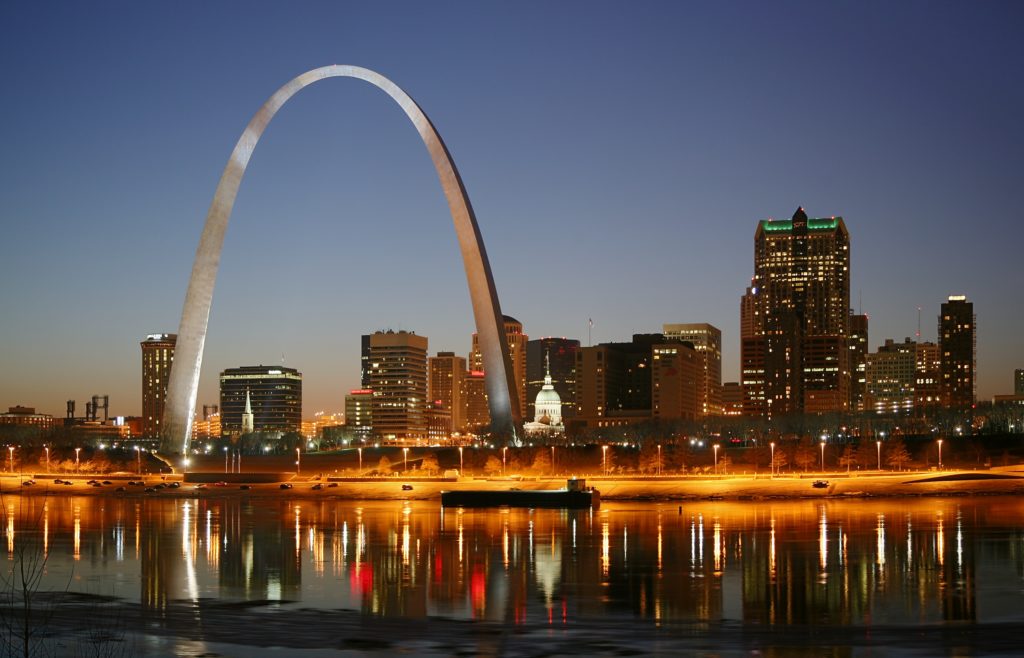
Article Summary: Missouri National Parks
Missouri National Parks! Welcome to the “Show Me” state.”
We’re going to show you 6 amazing national park sites in Missouri worth visiting.
There’s a host of amazing sites in this mid-western state visit. Best of all, they’re rich in history and filled with natural wonders.
I’ve been to so many of these amazing places since retiring from teaching in 2018. Did I mention that I taught history? I spent a lifetime teaching about the history behind these momentous sites. Then I got to see them firsthand. And now I’m sharing the stories of these incredible places with you. It doesn’t get any better than that!
From impressive monuments to presidential historic sites to scenic river ways to national battlefields and an iconic gateway arch, Missouri is a great state to visit!

What Is A National Park?
We get asked that question a lot because there’s a difference between a “national park” and a “national park site.” To help you understand that difference you might want to check out our article titled: What Is A National Park Really?
If you are planning a trip to Missouri then you might want to pick up a copy of Missouri State Parks and Historic Sites: Exploring Our Legacy, Second Edition by Susan Flader.
So, what are we waiting for? Let’s go!
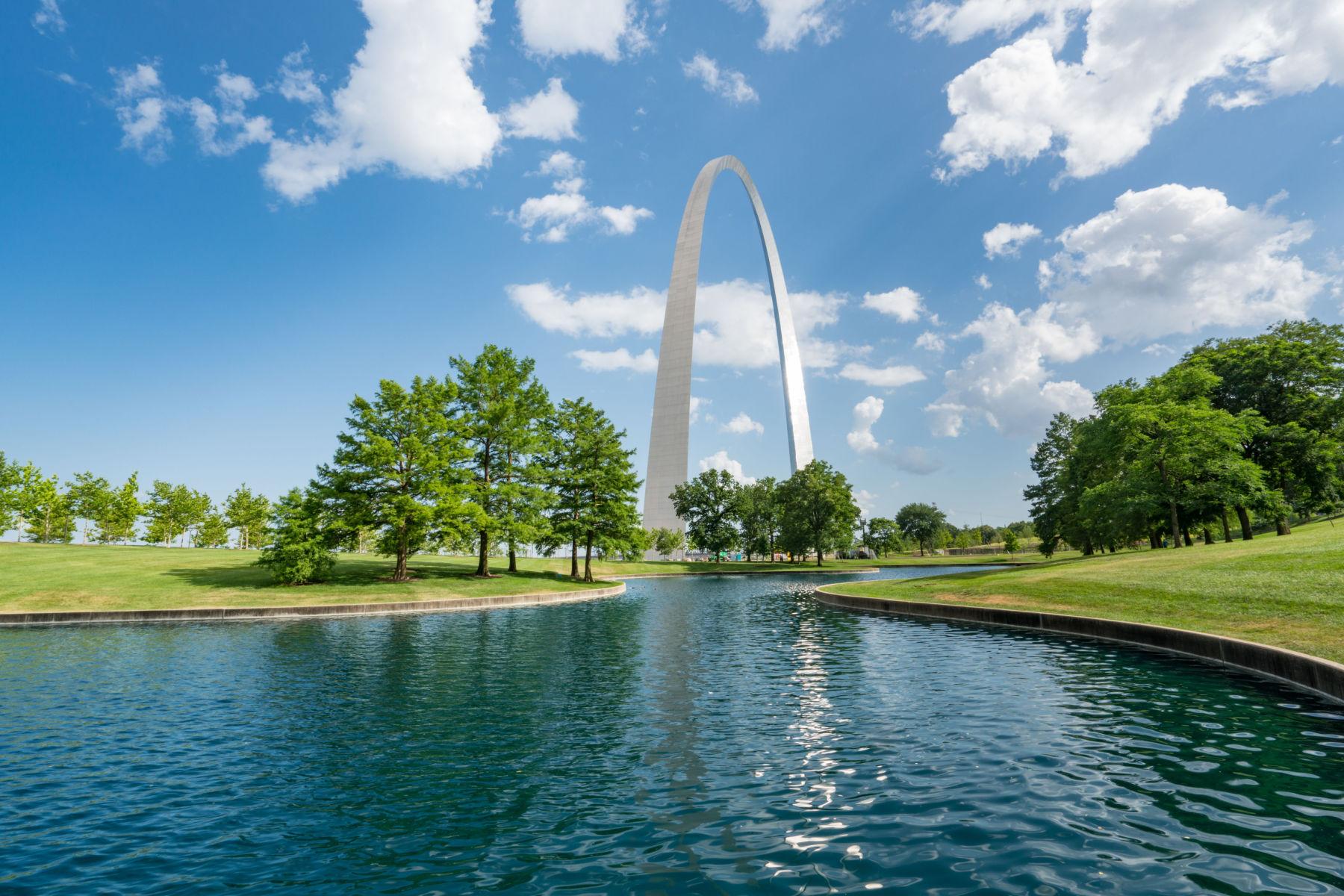
Table Of Contents: Missouri National Parks
Missouri National Parks
1. George Washington Carver National Monument
Among the wonderful Missouri National Parks is a place which commemorates a man who was a world-famous chemist who made important agricultural discoveries and inventions.
The George Washington Carver National Monument was established in 1943 to commemorate the life and achievements of George Washington Carver, a renowned agricultural scientist and inventor who is best known for his research on the use of peanuts and sweet potatoes as alternative crops.
Carver was born into slavery in Missouri in the mid-19th century, and he faced many obstacles on his path to becoming a leading scientist and inventor. Despite limited access to education and resources, he developed a keen interest in science, and eventually attended college and graduate school, earning a master’s degree in agricultural science.
After completing his studies, Carver worked at the Tuskegee Institute in Alabama, where he conducted groundbreaking research on crop rotation, soil conservation, and the use of alternative crops.
He also developed many innovative products from peanuts, such as peanut butter, and worked to promote their use as a healthy and affordable source of protein.
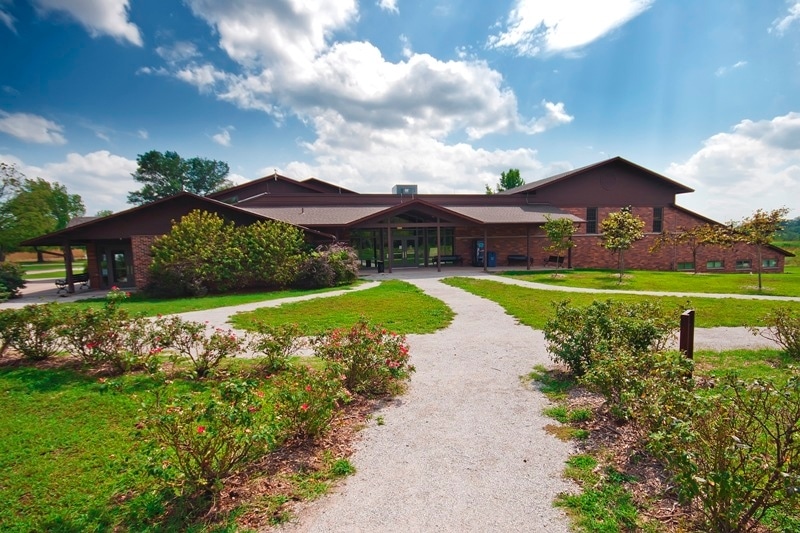
CHECK OUT: 20 Best Black History Sites For You To Visit In America
The George Washington Carver National Monument Today
The monument includes a museum, a nature trail, and a statue of Carver, and it serves as a tribute to his life and legacy.
Today, the George Washington Carver National Monument is a popular destination for tourists, educators, and researchers interested in learning more about Carver’s pioneering work in the field of agriculture, his impact on the African American community, and his enduring legacy as a leading scientist and inventor.
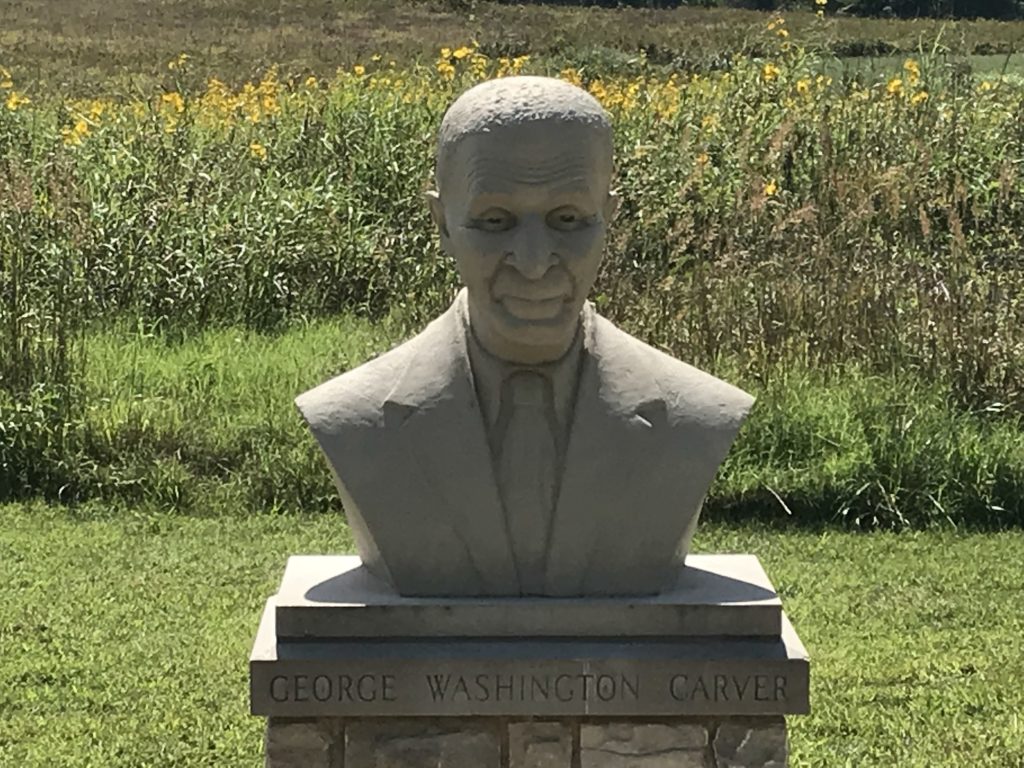
RELATED: 12 Amazing Georgia National Parks-Everything To Know
2. Harry S. Truman National Historic Site
Among the Missouri National Parks is one which celebrates a man who rose from humble beginnings to become America’s 33rd President of the United States.
Harry S. Truman’s extraordinary life and career impacted not only America, but the entire world. This is a man who went from being a Missouri judge to unleashing the nuclear age.
Truman left office as a very unpopular president, but–with the passage of time–his presidency has undergone a reevaluation. As a consequence, he has risen in national and international esteem.
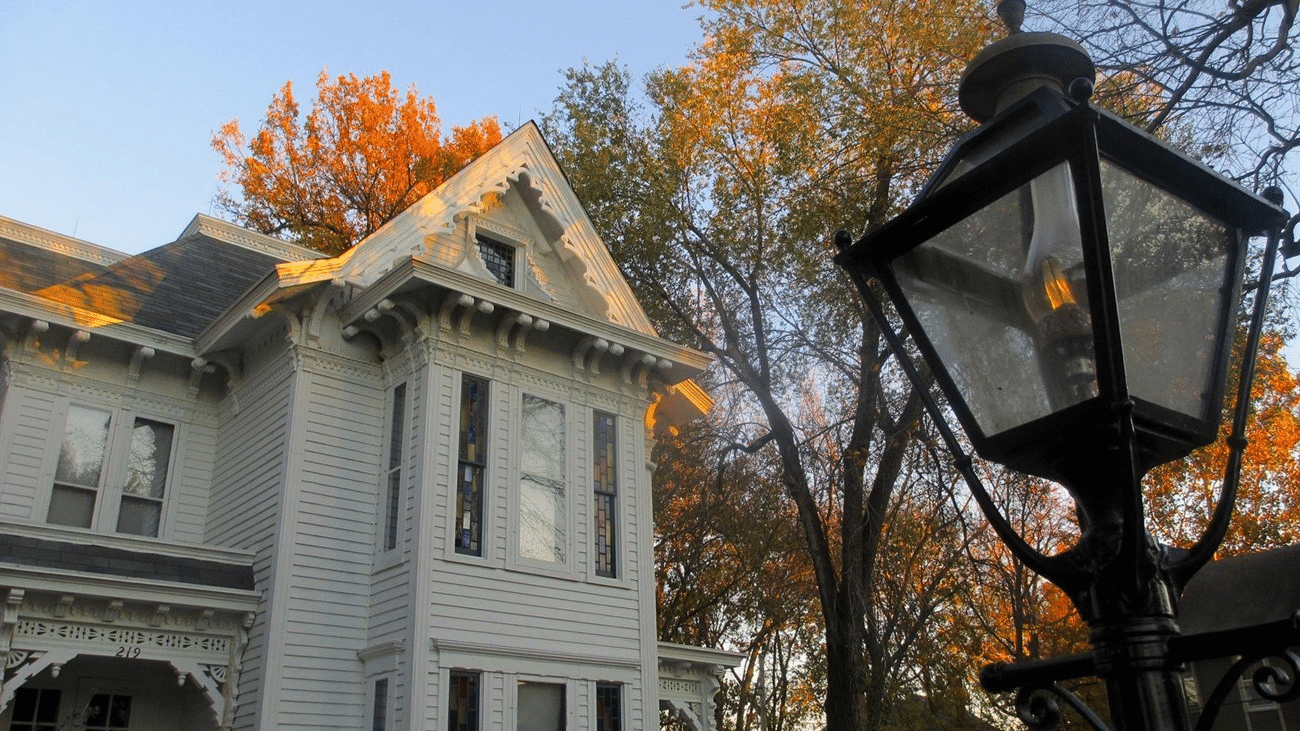
The Policy Of Containment
Truman left his mark on foreign affairs by introducing a policy of containment. Containment meant finding ways, short of all-out war, to restrain Soviet aggression. This policy would be tested in Korea and elsewhere.
It passed the test. There was no superpower military confrontations during Truman’s time in office. His successors, from Dwight D. Eisenhower to George H.W. Bush, wisely pursued this policy until the fall of the Soviet Union in 1991.
Truman also left his mark in domestic affairs. On July 26, 1948, President Truman issued Executive Order 9981. This order abolished racial discrimination in the U.S. Armed Forces. For the first time, the unfair and unjust policy of “separate but equal” was challenged by the U.S. Government.
And Truman protected the New Deal, enlarged Social Security, and banned discrimination in federal hiring practices. Another executive order issued by Truman made it illegal to discriminate against persons applying for civil service positions based on race.

A National Historic Site Worth Seeing
The Harry S. Truman National Historic Site is located in Independence, Missouri.
The site includes the Truman family home, where President Truman lived for more than 50 years, as well as the Truman Presidential Museum and Library.
The home, known as the Truman Home, is where Truman lived with his family before and after his presidency, and it is preserved as it was during Truman’s lifetime.
Visitors can take a guided tour of the home and learn about Truman’s life and presidency.
The Truman Presidential Museum and Library provides a comprehensive look at Truman’s political career and his role in American history. The site also includes a visitor center, exhibits, and an auditorium.
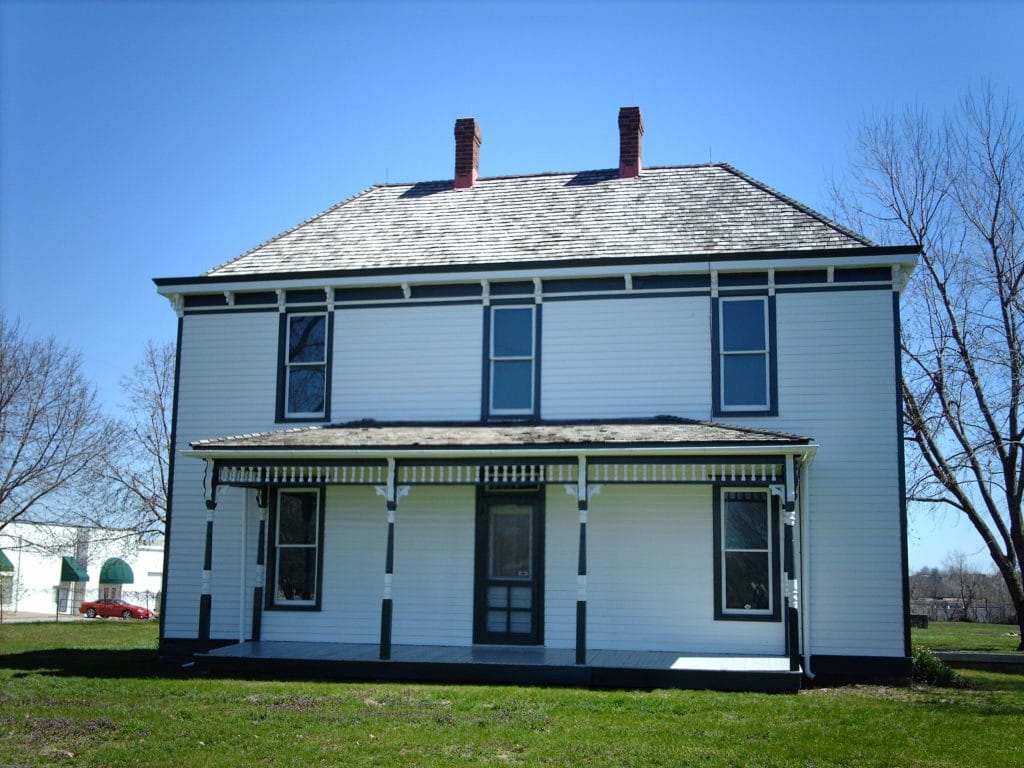
3. Gateway Arch National Park (formerly Jefferson National Expansion Memorial)
Among the amazing Missouri National Parks is one which celebrates one of America’s most iconic symbols.
If Missourians were asked to identify one symbol which represents their state, many would likely choose the Gateway Arch in St. Louis. This arch symbolizes Missouri’s important role in the Westward Expansion of the United States during the nineteenth century.
At a mere 91 acres, Gateway Arch National Park is the smallest national park in America. It doesn’t even have a natural area. So why, you might ask, is it a national park? That’s a good question. Before I try answering it, I’d like to give you a little bit of the history.
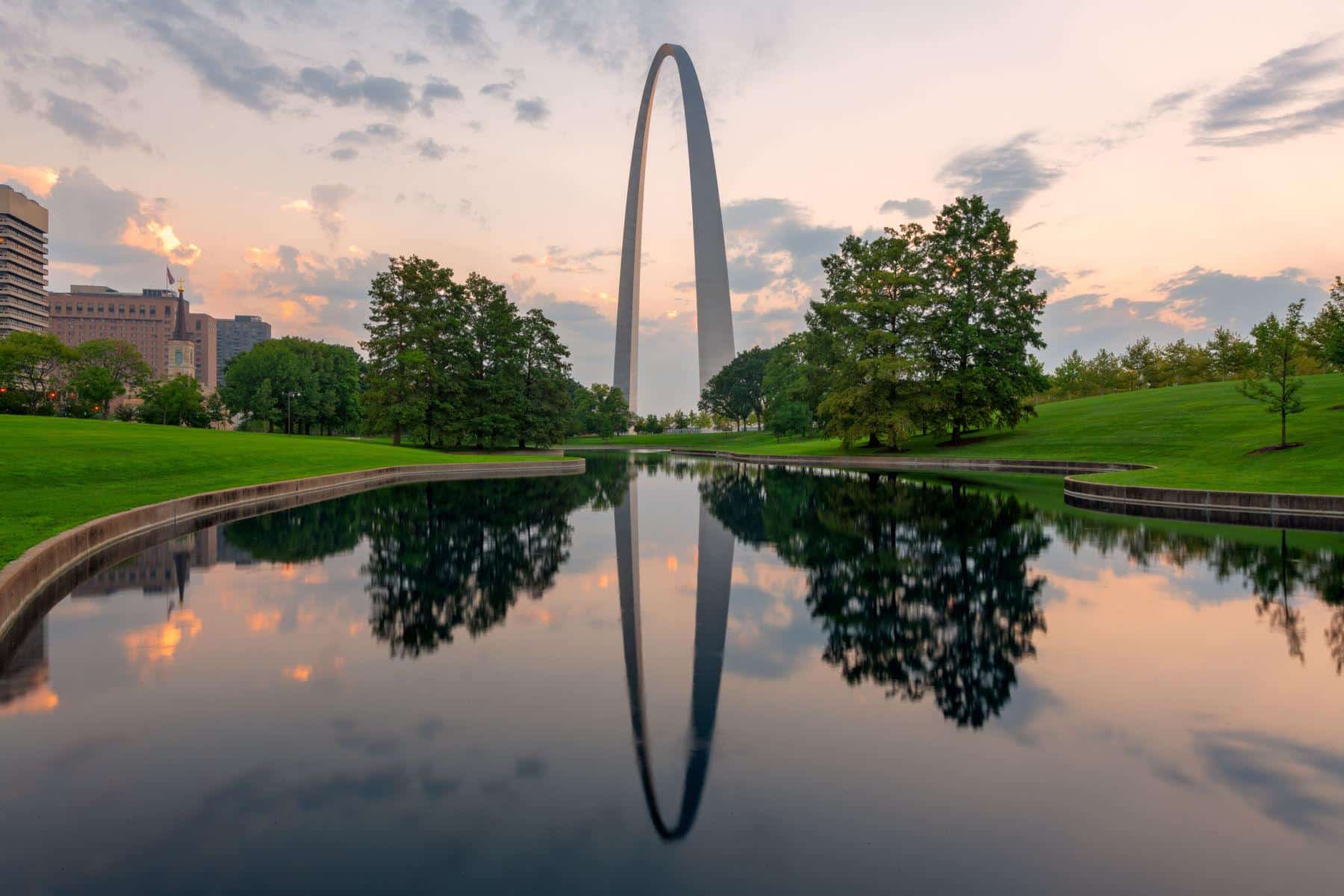
CHECK OUT: 10 FASCINATING Facts About Gateway Arch National Park
The Best Visitor Center
Before becoming a flagship national park in 2018, the Gateway Arch Visitor Center underwent a $380 million dollar renovation. That’s right! $380 million dollars!
Totaling more than 150,000 square feet, it’s accessed by a semi-circular entryway that is accentuated by the site’s curving geometry. The lobby is actually dug into a berm and organized around a circle of water. An artistic masterpiece!

The Gateway Arch
Speaking of artistic masterpieces, is it possible to provide enough superlatives about that magnificent archway? I think not. At 630 feet about the Mighty Mississippi River, the Gateway Arch is one of the most recognizable and beloved landmarks in the United States.
The monument we know today first began in 1935, when President Franklin D. Roosevelt designated property along the St. Louis riverfront to be developed as the Jefferson National Expansion Memorial (now known as Gateway Arch National Park).
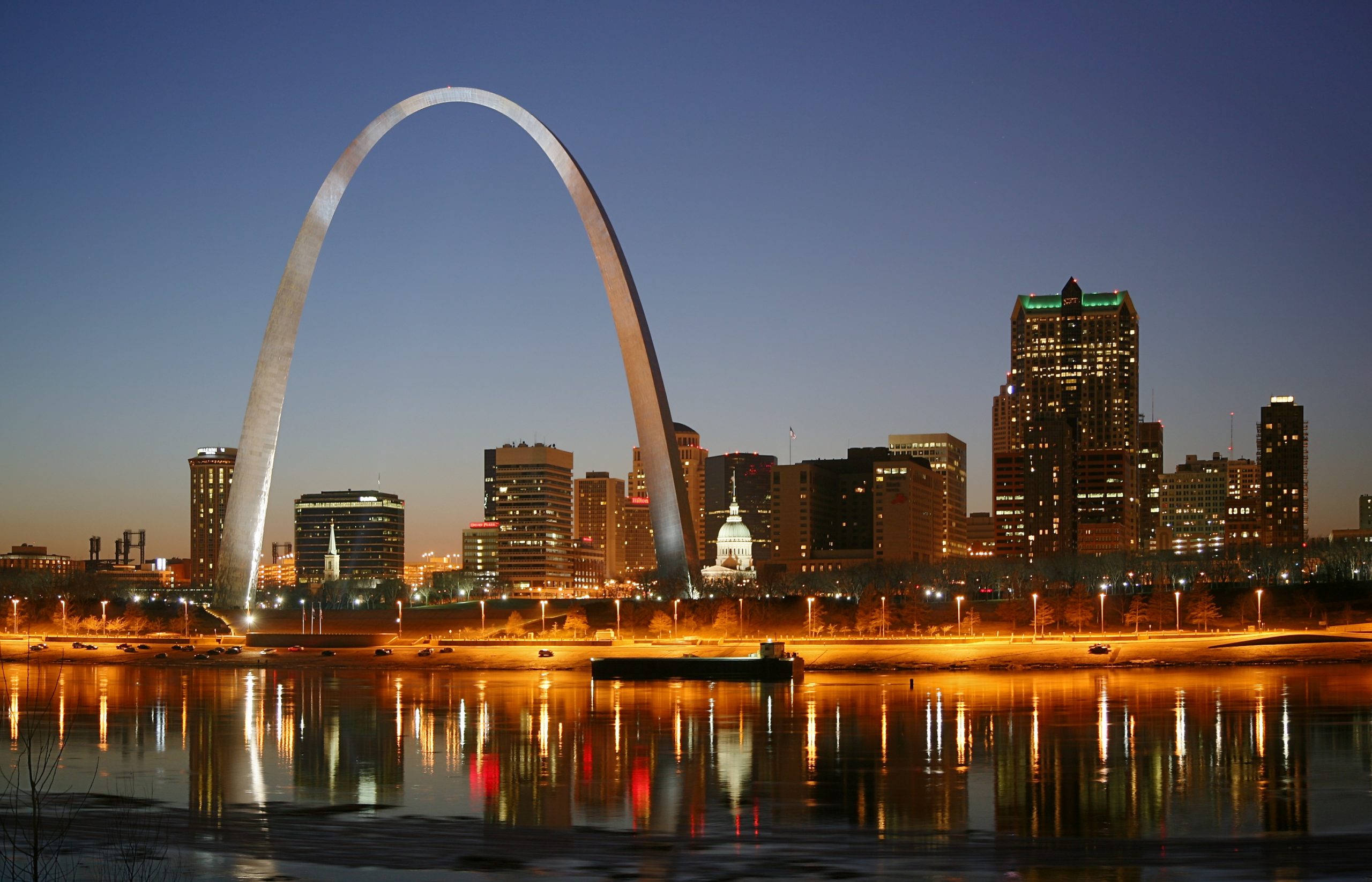
Eero Saarinen’s Vision
A nationwide design competition was launched in 1948 to determine what shape the Memorial would take. Architect Eero Saarinen’s design won and, in 1963, construction began on a stainless steel arch.
It was completed two years later in 1965. Today, it stands as a symbol of national identity and an example of mid-century modern design.
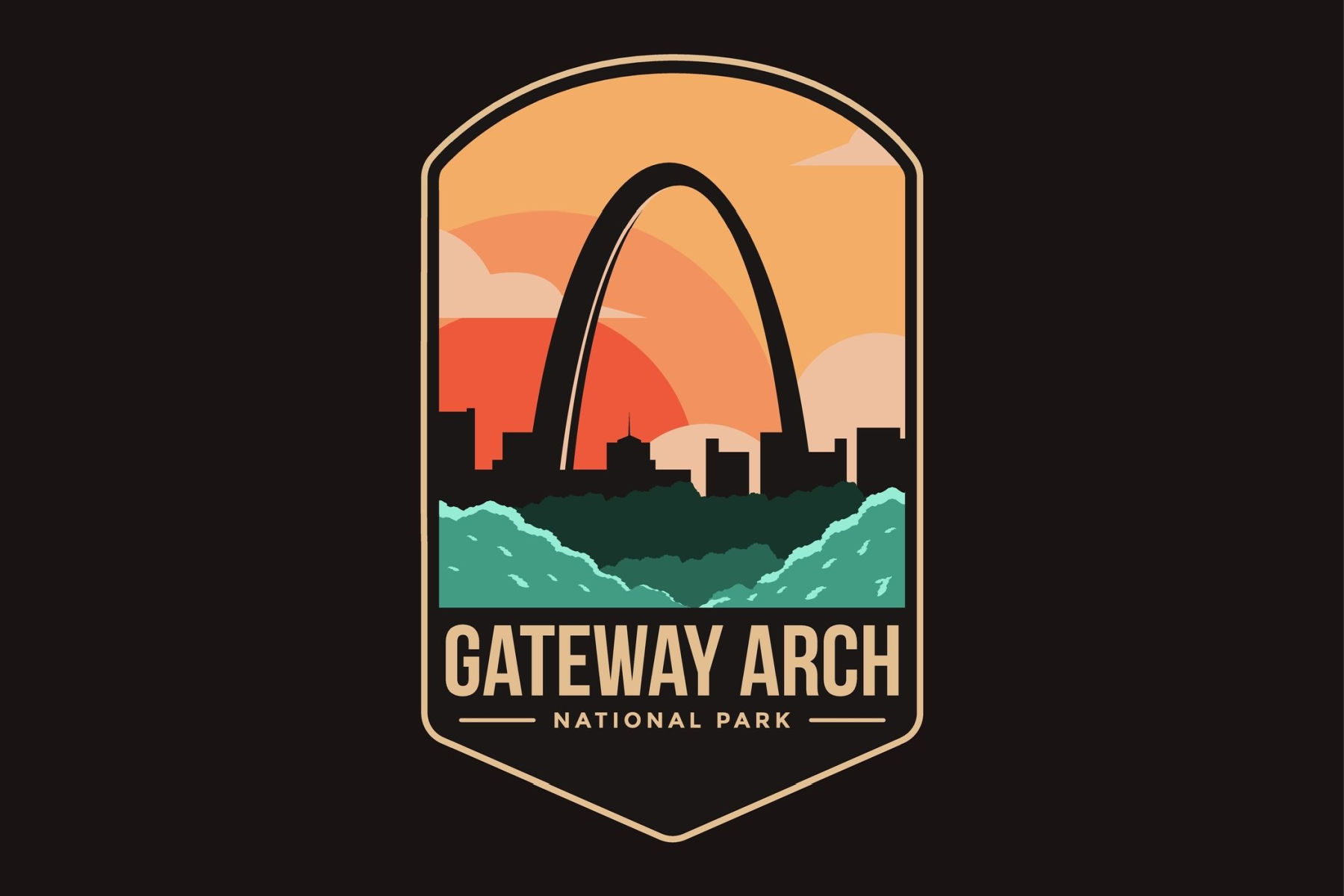
“The purpose of architecture is to shelter and enhance man’s life on earth and to fulfill his belief in the nobility of his existence.”
-Eero Saarinen
Visitors need to check out the breathtaking view at the top of the arch. One side overlooks the Mississippi river and Illinois while the other overlooks the city of St. Louis with Busch Stadium and downtown in the background. It’s well worth a trip to the top to see this amazing view.
Luther Ely Smith Park
Luther Ely Smith was a 19th century St. Louis lawyer and civic booster who first proposed a riverfront memorial for President Thomas Jefferson. It was his efforts which led to the creation of the Gateway Arch.
It is therefore fitting and appropriate that the park which bears his name should welcome visitors to the Jefferson National Expansion Memorial and Gateway Arch National Park.
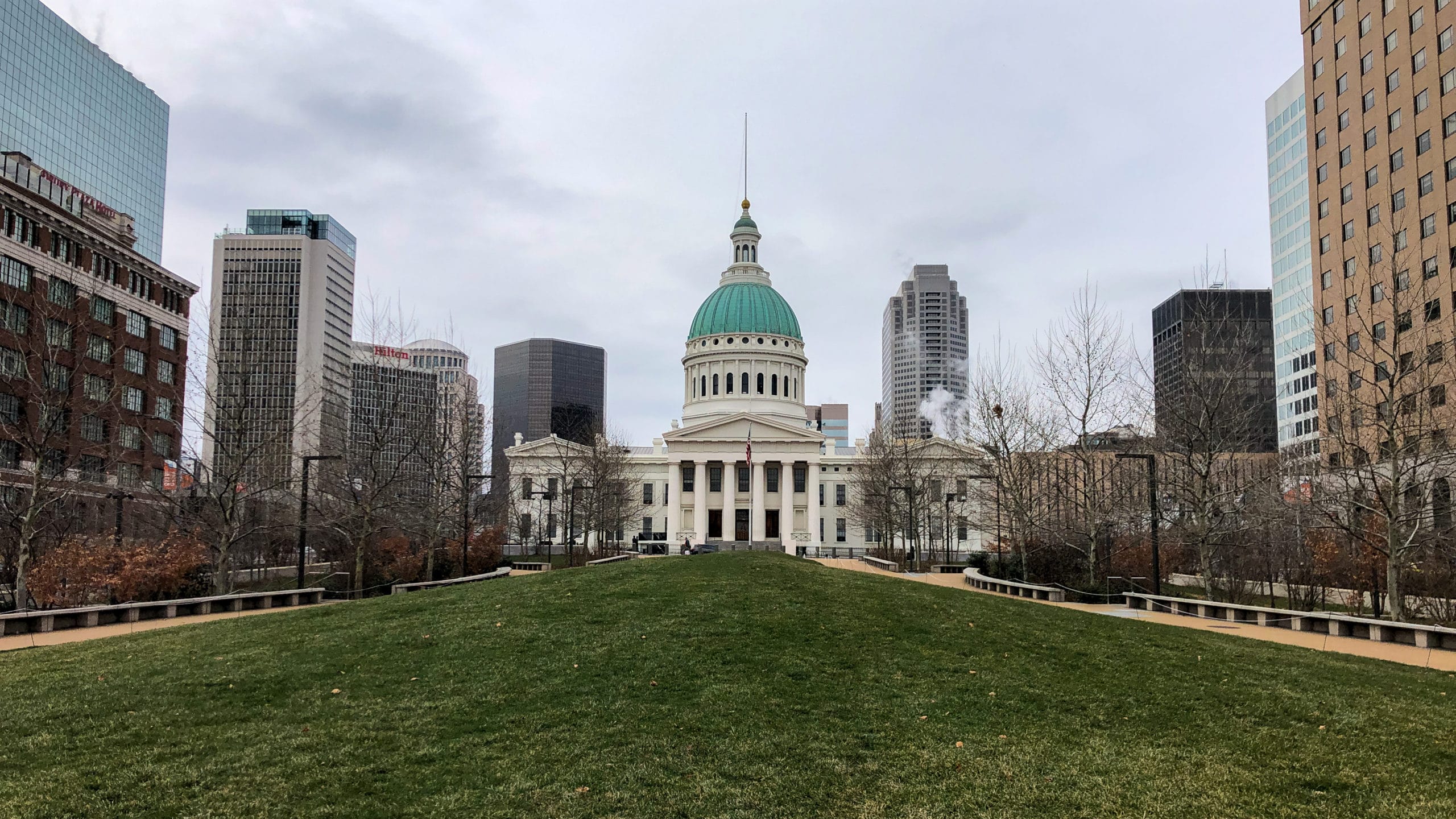
Luther Ely Smith Square
Luther Ely Smith Square is a magnificently landscaped green space, which leads to the entrance of the Arch.
Visitors to the area can enjoy unique plantings, picnic areas, and more than 300 feet of benches. For history buffs, there’s also the Museum of Westward Expansion, which is located below the Arch.
This museum contains an extensive collection of artifacts, mounted animal specimens, an authentic American Indian tipi, and an overview of the Lewis and Clark expedition.
So, Why Did It Become A National Park?
Sometimes, it’s more important who you know than what you know. Missouri’s Senator Roy Blunt sponsored changing the Jefferson Expansion National Memorial from a national memorial to a national park.
What is the National Park Service’s definition of a national park? Simply put, “a national park contains a variety of resources and encompasses large land or water areas to help provide adequate protection of the resources.”
Does Gateway National Park meet this definition? No.
I guess that old saying is true. It’s more important who you know than what you know.

RELATED: 7+ (AMAZING) Oklahoma National Parks-Everything To Know
4. Ozark National Scenic Riverways
On August 27, 1964, Congress created an act “to protect 134 miles of the Current and Jacks Fork Rivers in the Ozark Highlands of southeastern Missouri.” The Ozark National Scenic Riverways was the nation’s very first scenic riverway and one of my favorite Missouri National Parks.
It was a forerunner to the Wild & Scenic Rivers Act, which Congress passed and President Lyndon Johnson signed into law four years later.
What you need to understand, however, is that it’s more than just rivers. This beautiful wilderness area encompasses bluffs, caves, hollows and streams. It’s a beautiful wilderness wonderland and a great place to go exploring. Just make sure that you follow the rules when you do.
Over 300 caves have been uncovered. These caves provide a critical habitat for the endangered Indiana and Gray bats. Some caves are gated or signed to protect bat habitat.

RELATED: 7 EPIC Arkansas National Parks
Things To Do In The Park
It’s worth pointing out that Ozark National Scenic Riverways is the first national park area to protect a river system. There are two rivers which provide opportunities for visitors to go canoeing, fishing, swimming, and tubing.
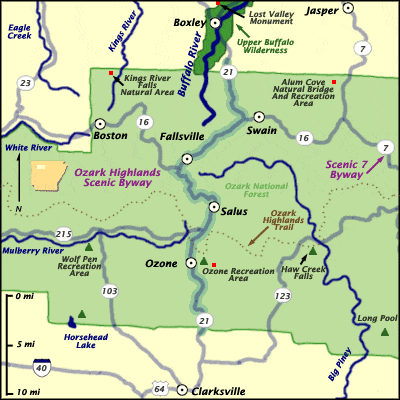
It’s also a national park where there’s hiking and hunting. Hunting is allowed within the Riverways’ boundaries, except around developed areas.
If it’s the flora and the fauna you’ve come to see then you’ll be pleased to know that, according to the National Park Service: “There are 112 species of fish, 197 species of birds, and 58 species of mammals found in the park.
There are also 26 species of amphibians and 46 species of reptiles found in the park area, including four venomous snakes. The park is home to approximately 1,000 plant species.“
RELATED: All Of Florida’s National Parks RANKED 2021 (+Video)
More Missouri National Parks
5. Ulysses S. Grant National Historic Site
Like George Washington, Ulysses S. Grant may have given his greatest service to his country as a general rather than a president. Most historians agree that Grant was the savior the Union needed as it wrestled with the difficult challenge of subduing the South and bringing an end to the Civil War.
While other Union Generals allowed Robert E. Lee to dictate their actions on the battlefield, Grant pursued his opponents with a single-mindedness of purpose. He did this no matter who his opponent was. His bulldog tenacity and brilliant strategy broke the back of the Army of Northern Virginia thus bringing an end to the nation’s bloodiest conflict.

RELATED: 10 BEST Civil War Sites In America
To Learn More About Grant
To learn more about Grant’s successes on the battlefield and after he left the military, I would recommend Jean Edward Smith’s Grant.
My son Jim highly recommends Ron Chernow’s Grant for a fuller understanding of both the general who saved the Union and the far-sighted public servant who’s presidency is deeply misunderstood.
Why You Should Visit The U.S. Grant Historic Site
Missouri National Parks include sites which commemorate not just one, but two consequential American Presidents. The Ulysses S. Grant National Historic Site is the home of the 18th President U.S. Grant and his wife, Julia Dent.
The Ulysses S. Grant National Historic Site includes White Haven, the home where Grant lived with his wife and family before and after his presidency, as well as the nearby Old Orchard, which was the site of a family farm.
White Haven is a restored mansion that was built in 1854, it is where Grant and his wife Julia Dent Grant lived for a time and where Grant wrote his memoirs, which helped to pay off his debts and secure his family’s future.
Visitors can take a tour of the home and learn about Grant’s life and presidency. The site also includes a visitor center, exhibits, and a film that provides an overview of Grant’s life and legacy.

6. Wilson’s Creek National Battlefield
The Civil War may have ended over one hundred and fifty years ago, but the history of that momentous event just keeps coming. One of the Missouri National Parks, Wilson’s Creek National Battlefield, preserves the site of the Battle of Wilson’s Creek.
For those of you unfamiliar with this battle, it took place on on August 10, 1861. It was the first major Civil War battle fought west of the Mississippi River.
The Union Army was defeated by a Confederate force commanded by Benjamin McCulloch and Sterling Price. Union General Nathaniel Lyon was killed during the battle.
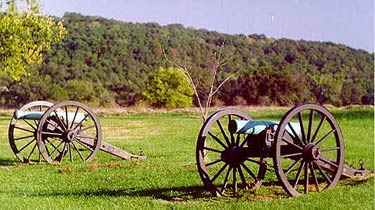
RELATED: 9+ Mississippi National Parks For Your Bucket List (Expert Guide)
Things To Do At Wilson’s Creek
There are some wonderful things to do at Wilson’s Creek National Battlefield. The visitor center features a bookstore, museum, and library.
There is a 4.9-mile paved tour road. Visitors can take a self-guided auto tour with eight interpretive stops at different locations.
There’s also some great walking trails which include a pedestrian lane for walkers, runners, or cyclists. And there’s a 7-mile trail system for horseback riding. Hiking is accessible from the tour road as well.
The Ray House
Visitors can tour the Ray House, which is a historic home dating back to the 1850s. The home served as a field hospital for Southern soldiers following the battle. The Ray House is where General Nathaniel Lyon’s body was brought after he was mortally wounded.
There are also some wonderful living history programs. These depict Civil War soldier life, musket and artillery firing demonstrations, Civil War medicine, and other related topics.
These programs are available from Memorial Day to Labor Day on selected weekends. You should check for availability before planning your visit.
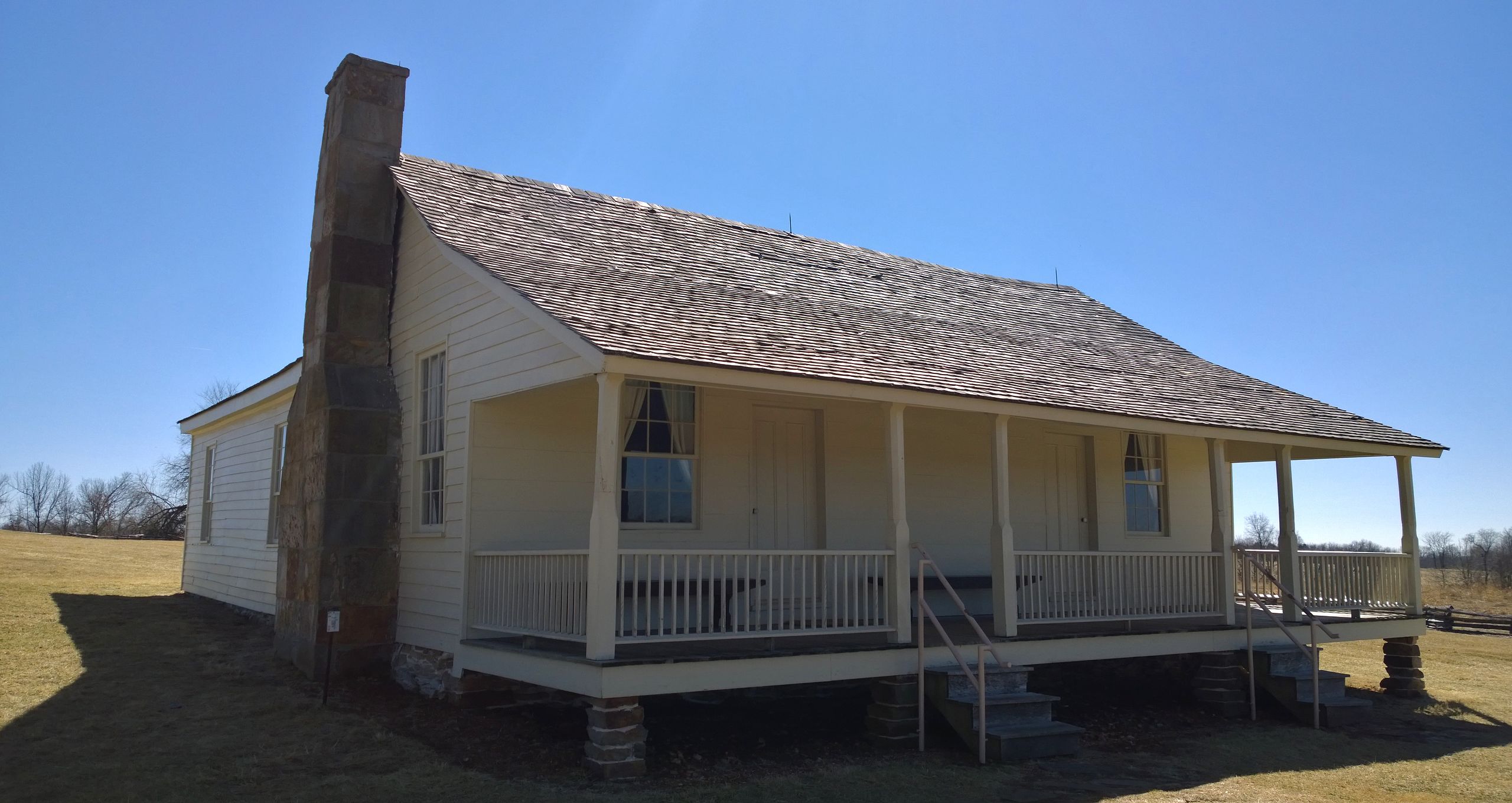
Check Out Our Zion National Park Film
ZION is the culmination of nearly a month spent exploring Zion National Park during peak fall color.
Exquisitely carved by the Virgin River over millions of years, Zion Canyon is one of the most stunning places on earth. But don’t stop there! This park has so much more to offer outside of the main canyon.
Golden meadows, sweeping vistas, red rock mountains, towering white temples, and powerful ancient rivers comprise this incredible treasure.
Filmed primarily in stunning UHD 8K. We chose to capture this film in Autumn to showcase the stunning and little known fall color of Zion National Park. Fall is also a time when visitation dies down from peak summer months and one can find more solace in the park.
Missouri National Parks FAQ
Yes. It has one. Gateway Arch National Park is one of the congressionally-designated national parks in America.
These are a few things that Missouri is known for, some of the most popular being its barbecue, strong agriculture industry, and iconic landmarks like the Gateway Arch. The state is also home to many beautiful state parks, which are perfect for hiking, camping, and picnicking.
The following are a list of must-see historic sites:
The Gateway Arch
Harry S. Truman National Historic Site
Ulysses S. Grant National Historic Site
George Washington Carver National Monument
Wilson’s Creek National Battlefield
Mark Twain Boyhood Home & Museum
Laura Ingalls Wilder Home & Museum
Missouri Botanical Gardens
Patee House
Mutual Musicians Foundation Building
Why Trust Us About Missouri National Parks?
We’re Jim Pattiz and Will Pattiz, collectively known as the Pattiz Brothers (and sometimes the Parks Brothers) and we absolutely LOVE the national parks.
You should probably know that we don’t just make this stuff up out of thin air. We’ve spent our entire adult lives exploring and filming America’s national parks and public lands.
We’ve worked with the National Park Service, the Department of Interior, USDA, and the U.S. Forest Service for years creating films on important places and issues. Our work has been featured in leading publications all over the world and even some people outside of our immediate family call us experts on the national parks.
Meet The Parks Brothers
Map Of Missouri National Parks
List Of National Park Sites In Missouri
- George Washington Carver National Monument
- Harry S. Truman National Historic Site
- Gateway Arch National Park
- Ozark National Scenic Riverways
- Ulysses S. Grant National Historic Site
- Wilson’s Creek National Battlefield
We Hope You’ll Follow Our Journey

Our goal here at More Than Just Parks is to share the beauty of America’s national parks and public lands through stunning short films in an effort to get Americans and the world to see the true value in land conservation.
We hope you’ll follow our journey through the parks and help us to keep them the incredible places that they are. If you’re interested in joining the adventure then sign up below!
Check Out Our Comprehensive Guide
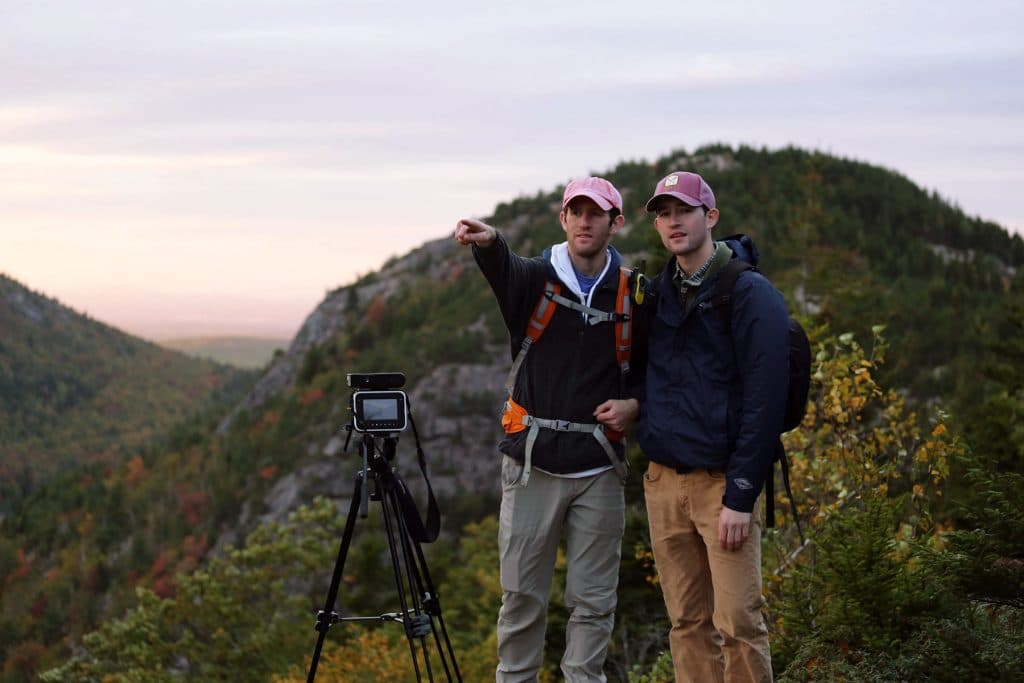
I hope you’ve enjoyed learning about some amazing places to visit in Missouri. If you’re interested in learning more about our national parks please check out our complete rankings of all 63 of them.
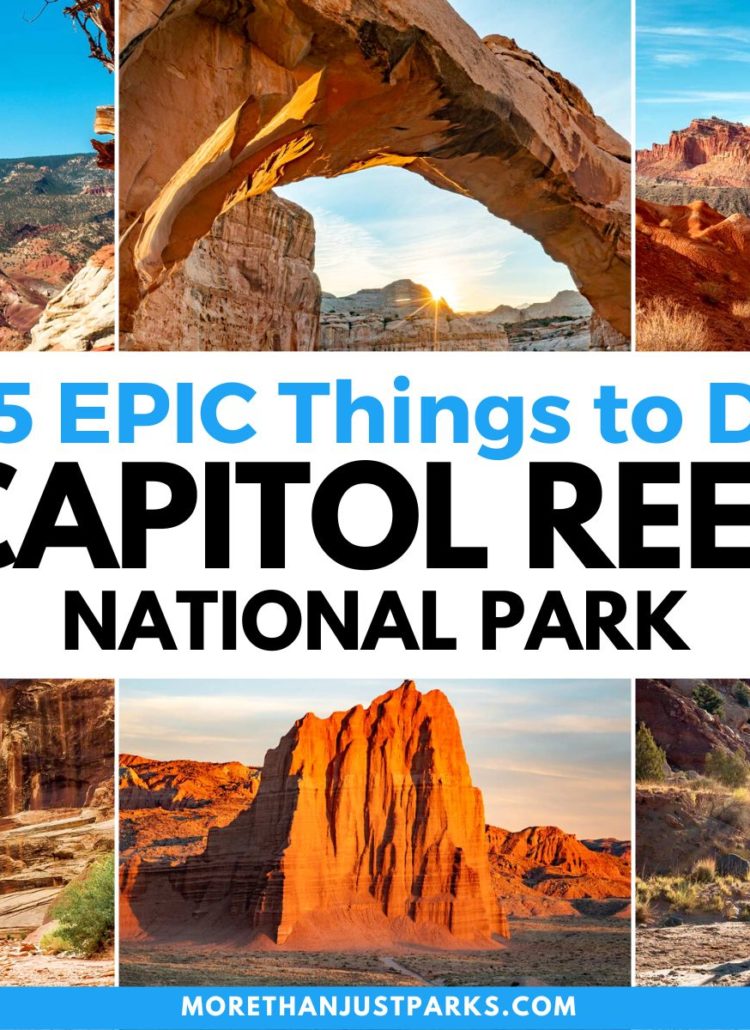
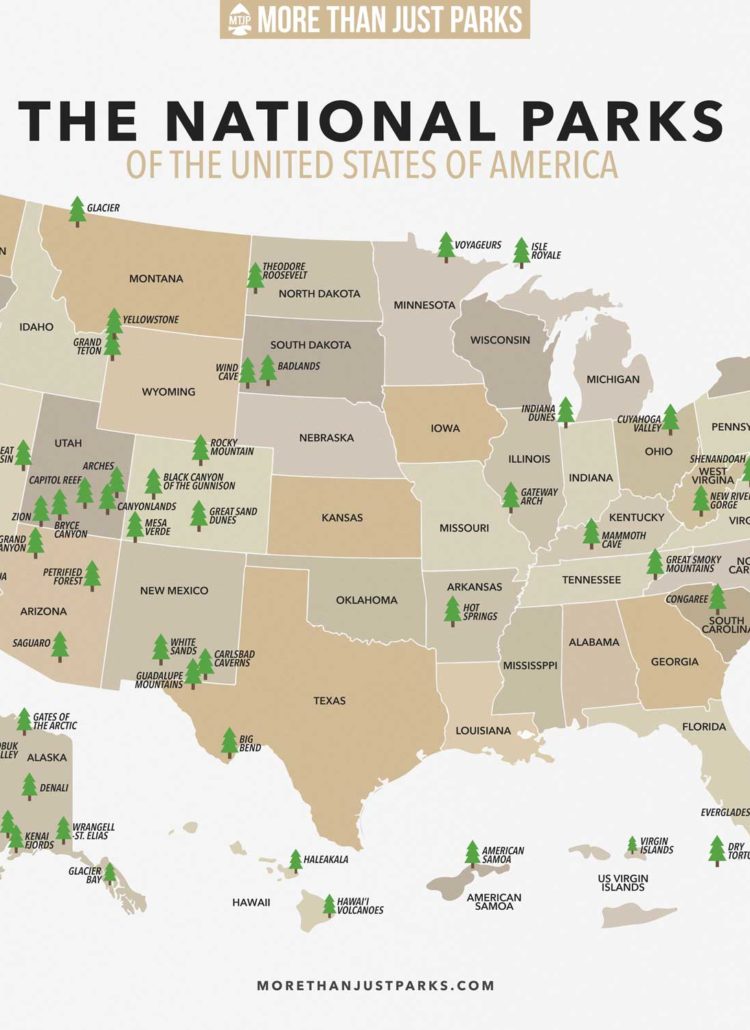
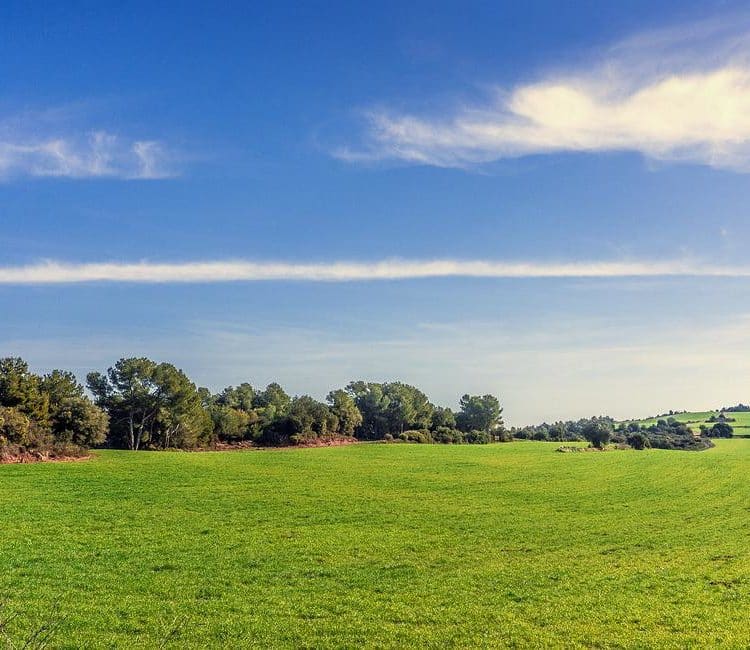


Leave a Reply